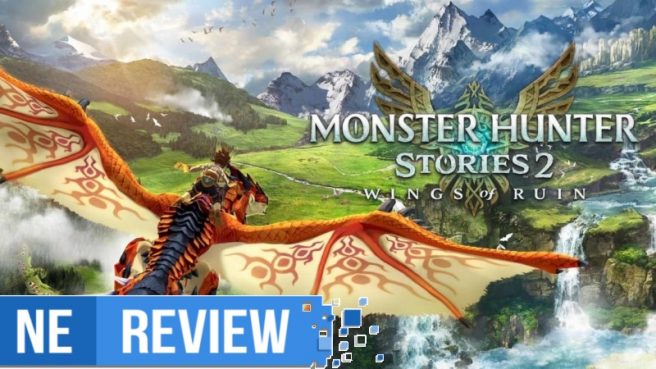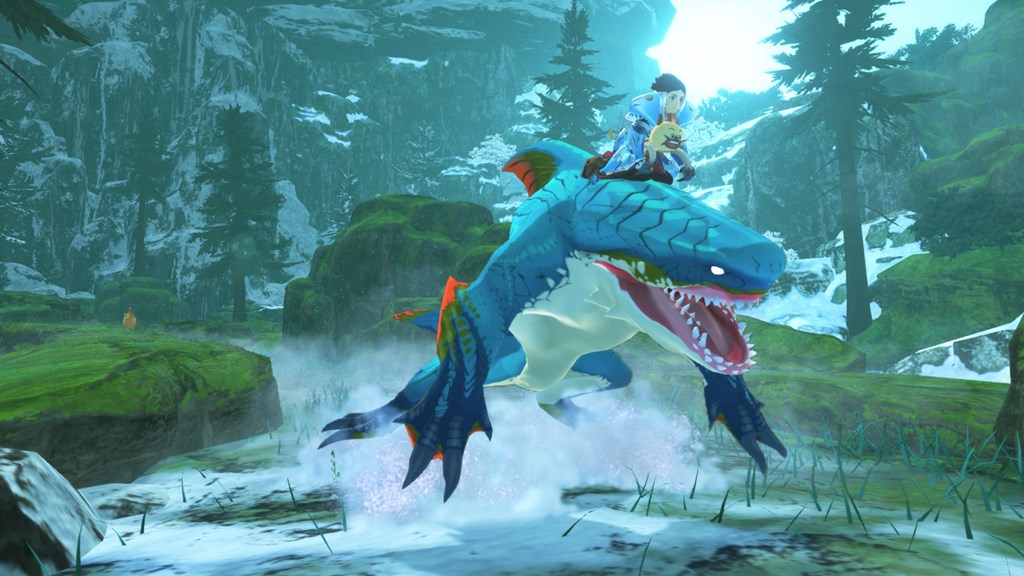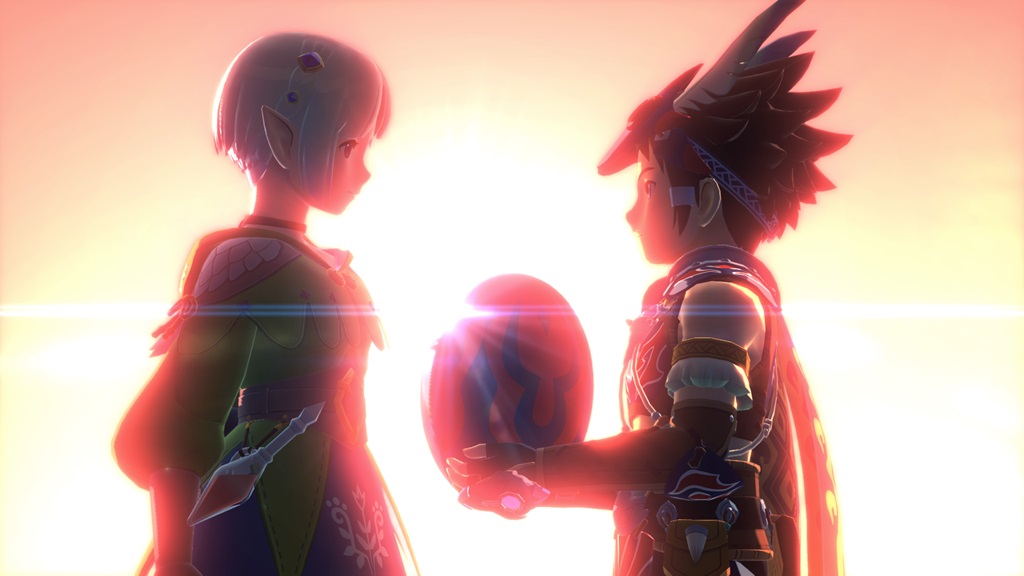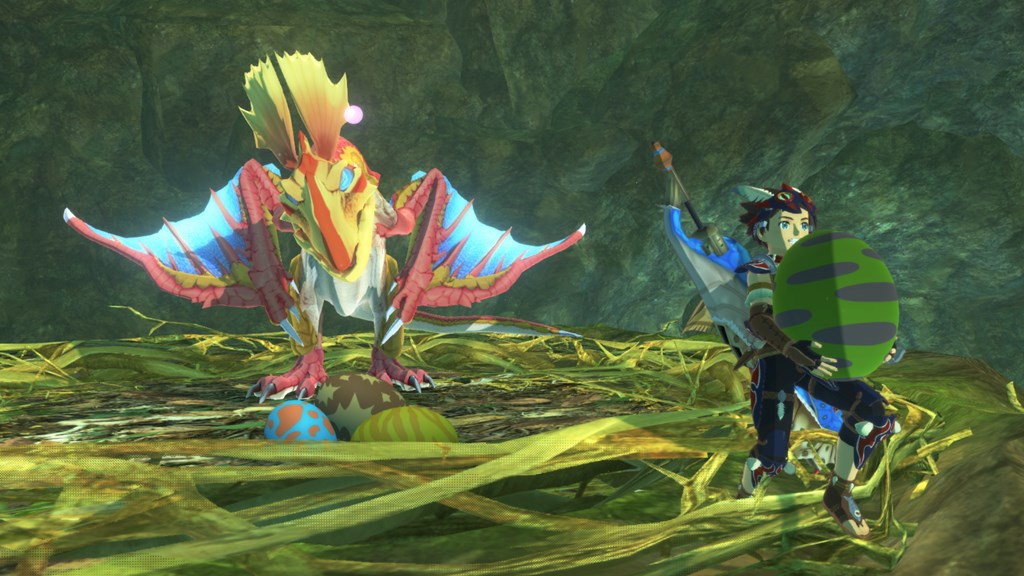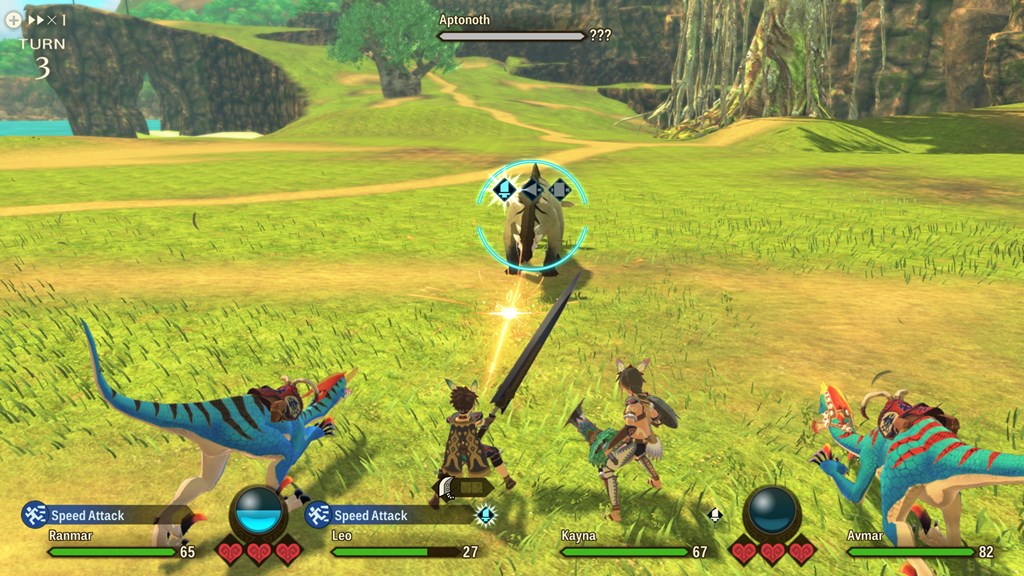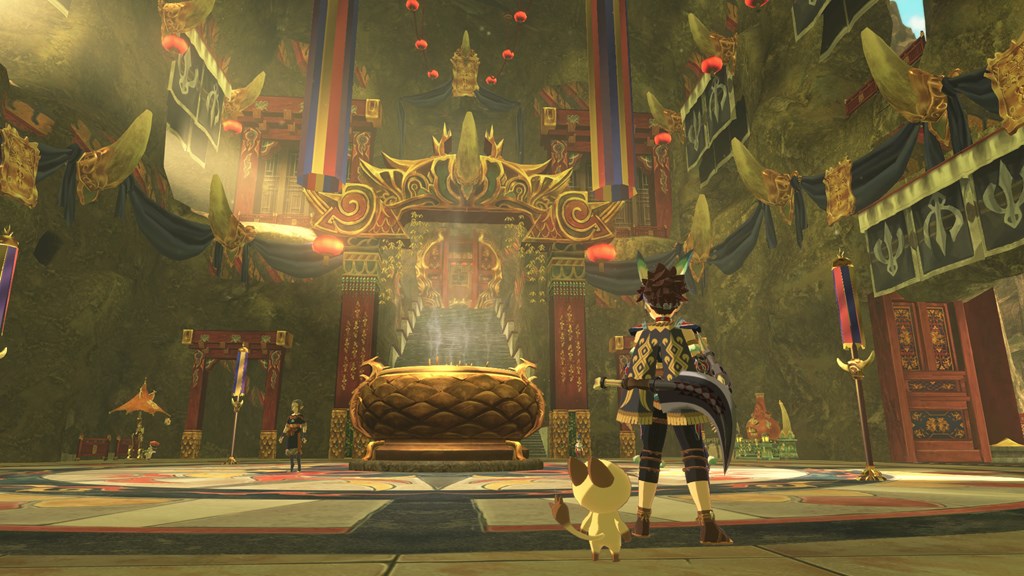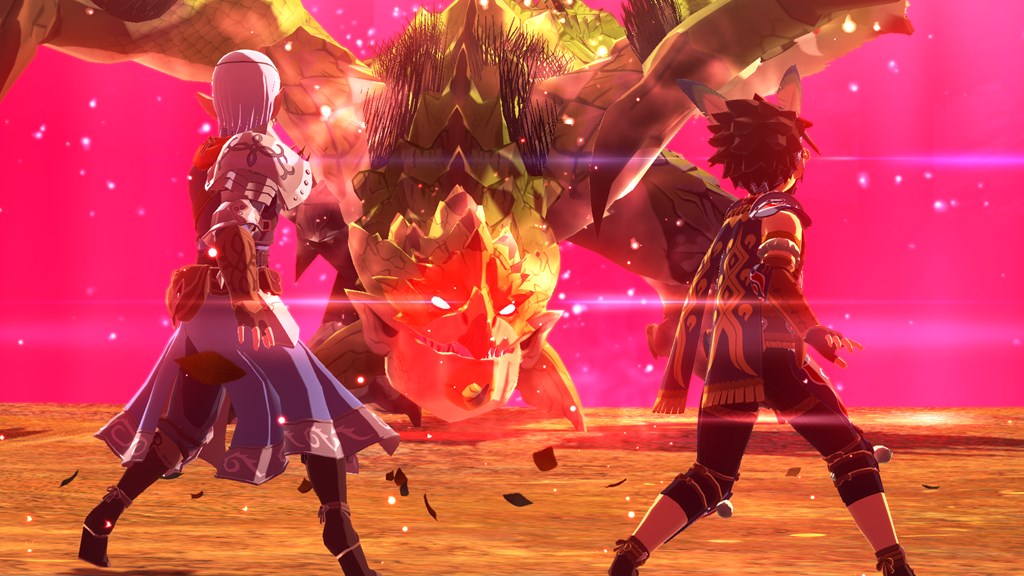[Review] Monster Hunter Stories 2: Wings of Ruin
Posted on July 7, 2021 by Dennis Gagliardotto(@LyonHart_) in Reviews, Switch
System: Switch
Release date: July 9, 2021
Developer: Capcom
Publisher: Capcom
The Monster Hunter franchise has spanned nearly two decades of behemoth slaying and protecting villages while you work your way up the food chain to the biggest and most vicious monster of them all. However, the series never really had a true spinoff that took the world but turned it on its head like Monster Hunter Stories did in 2016. The game spawned an amiibo as well as manga and anime, using the Monster Hunter world and formula, but giving it a monster-catching foundation. Monster Hunter Stories, despite its name, was arguably one of the lesser talked about RPGs on 3DS, so it was a pleasant surprise to see Capcom give the idea another chance on Switch. It’s even more amazing to see that with Monster Hunter Stories 2: Wings of Ruin, Capcom has expanded upon and improved just about every facet of its predecessor, giving Monster Hunter a refreshing new look and feel.
Monster Hunter Stories has everything the IP has been known for over the course of its lifespan, having the usual monsters we’ve all known and loved from Arzuros and Jaggi to the famed Rathalos and Diablos. There’s also all of the incredible armor types and items that have become staples and part of Monster Hunter’s legacy, from the herbs to the paintballs, traps to whetstones and more. All of these are still part of the genetic makeup of Monster Hunter Stories, though how a lot of them work, are found, and used will end up being mechanically different thanks to its turn-based combat versus action-heavy origins.
Monster Hunter Stories puts a big emphasis on Riders, which are the tamers of their respective regions that utilize monsters – or in this case Monsties – to help them protect and survive in a variety of condition and situations. They’re taken care for and trained alongside the riders, and the general direction and perspective of how your party travels alongside you and are treated in battle isn’t far off from the likes of Pokemon or Shin Megami Tensei, building a team of capable fighters that help you along the way as you aim for growth and complete missions and tasks.
In the case of Monster Hunter Stories 2, Riders will embark on an adventure that sees them go around the various and beautiful parts of Capcom’s stunningly-crafted world to figure out what’s causing monsters to spontaneously rampage, ruin, and threaten life around them, all while investigating sudden holes and disappearances that have been occurring in various areas of the multiple regions you’ll travel through. As you uncover more, rage-rays that befall the land and cause these monsters to become violent and powerful will be up to you to get to the bottom of and cleanse as you grow as a Rider and continue your grandfather’s legacy, who’s always been known as the grand Rider with a trusty Rathalos before similar unfortunate and tragic events swept the lands long ago.
You’ll begin with and be introduced to much more expansive customization features to give your Rider the look you want before embarking on Monster Hunter Stories 2’s vast and vibrant environments. These features have been greatly enhanced since the original game, which only had a depressingly select few, and offer enough variety that players should see themselves looking rather distinct from one another, especially in online play. Thankfully, nothing is entirely permanent either, so if you regret maybe choosing a certain hairstyle or tattoos, you’ll be able to change them at will later once you’ve been granted your own house to stay in.
Each village and area – known as headquarters – will see a decent chunk of time spent in them as they all weave into the narrative, so thankfully there’s no need to fast-travel back to specific locations whenever you want to do something as you’ll be given a home in each location. These areas will also grant all of the necessary vendors you’d expect of a Monster Hunter game to help you forge, sell, and buy whatever it is you need. There are a lot of quality-of-life features here too that make the entire experience of playing Monster Hunter Stories 2 feel seamless, comfortable, and intuitive, as you can do quite a bit from the main menu (or Camp Menu) like fast-travel, craft, and manage resources. There are vendors and NPCs that can be interacted with that help you with these as well in the hub worlds, but if you’re out in an area and far away from the next transition into a new or former area, it’s nice not having to stress out about having to be far away from a certain save location or potentially losing all recently acquired items once you’ve lost your health if you find yourself in the middle of nowhere. It’s features like these that also make Monster Hunter Stories 2 much more accessible and palatable to those that may not have time to grind as much and start over time and time again, making progression feel natural and very rarely hindered by odd mechanics or design choices that work against the player rather than with.
Another big plus of its seamless gameplay is that Monster Hunter Stories 2 has some of the best cinematics I’ve seen from Capcom in quite some time. The ones that are fully animated rather than basic dialogue exchanges are full on spectacles with epic orchestration that, I dare say, could rival some bigger animated feature films. The intensity and emotion that exudes from some of these scenes and how they continue to set a grander stage of things to come as the story progresses keeps you at the edge of your seat, and you can’t help but continue to fall in love with the game as you play more and more.
Travelling through each area may seem at first like an empty (yet very pretty) field to walk through, but it’s actually extremely meaty the more you delve into these open locales that rarely have loading screens get in the way (though they’re definitely there). The core Monster Hunter experience will shine most here before heading into combat, where Monster Hunter Stories 2 introduces you to a whole new battle system that works surprisingly well given the series’ history. Throughout your journey you’ll come across themed areas – from beaches, to mountains, to volcanoes, and more – and in each you’ll be acquiring insect husks, honey, stone, and the sort like you would normally in Monster Hunter, picking up any resources given by the flora of the terrain as you head towards your target.
In addition to acquiring the usual resources on your expeditions, Monster Dens and Everdens will be caves that you visit fairly often in acquiring monster eggs and bottlecaps respectively. These vary from Everdens mainly in this way, though another big proponent is that dens are placed sporadically and in random locations each time you enter a new area, whereas Everdens are always in set locations no matter what. In the Monster Dens, eggs are going to be what give you the Monsties to help you grow and progress, and they can be typically found at the end of the den with a sleeping monster that – after three attempts of searching for the right egg (these can vary in rarity and stats as well depending on their stench and weight) – will wake and you’ll find yourself in usually a tough battle of a creature defending their eggs. Thankfully, once you’ve gotten the egg you’re happy with, walking just a few feet away will allow you to be instantly teleported to the outside entrance of the den with the egg automatically being sent to the stables of your nearest hub where it will safely be kept until you decide to hatch it.
This is another convenient addition of Monster Hunter Stories 2 as some of the caves are massive in scale, and walking back would be a hindrance. It also avoids an immense amount of anxiety one would typically get when holding an egg in a mainline Monster Hunter game, where they can break extremely easily and you’re meant to travel long distances with such. While the explanation of handling eggs, hatching them, and channeling them isn’t the best within the game, after simply playing it tends to make sense after a few tries. The Rite of Channeling will be the most “complex” of the bunch as this is what you’ll be doing to unlock passives and buffs for each Monstie, using other Monsties that you have to transfer their genes over to grant new abilities. Once this is done, however, that Monstie is gone for good.
The Everdens found in the overworld on the other hand provide a similar layout of caves but provide bottlecaps which serve as a sort of “premium” in-game currency that can be used to buy special types of armor you normally wouldn’t be able to forge or for blueprints and hairstyles and such. Bottlecaps can sometimes be awarded through sidequests, but otherwise are mainly acquired this way and are in various locations within the caves and with a varying amount in each chest. Typically the most can be found at the very end of the cave similar to Monster Dens, where you can also have a chance of getting another egg for a quick teleport back to the entrance once you’ve finished.
Outside of dens, the Monsties themselves can be used in a variety of ways to help traverse and uncover new areas within these maps, each coming with their own ability to do so. Some can swim and some can dash, while others can search for items and monsters within the areas as well as roar to startle other monsters or even stealth to hide from them completely. Making use of all of these abilities can help reach and find new areas that help give rarer resources and uncover new chests that will help you tremendously along the way. Eventually many hours into Monster Hunter Stories 2, you’ll be able to fly around, and once that happens opens up a whole new way of seeing the maps you’ve already been to. This adds another layer of depth that keeps expanding upon the game as you go, making it better and better.
The overworlds and maps without a doubt have their Monster Hunter flare and flavoring, but it’s in the battles themselves that will make up the bulk of Monster Hunter Stories 2’s gameplay, and that’s where things become massively different. You and your party of Monsties will participate in the battles and more often than not – depending on where you are in the story – you’ll have help from another rider that typically hails from whichever hub you’re current stack of main quests is from and narrative is taking place. Monsters, Monsties, and Riders are typically going to be utilizing three main variants of an attack: power, speed, and technical. These three serve as a sort of “rock, paper, scissors” mechanic that when you’re going head-to-head with a monster (typically identified by it facing towards you with a line) will determine who gets the upper hand and the stronger hit, sometimes negating damage entirely for the winner of the gamble.
While it’s a “learn as you go” system when facing monsters for the first time, getting used to their patterns is ultimately what will give you and your team the advantage, though a lot of the smarts happen individually as your Monsties and any accompanying Rider will attack on their own. You can influence the type of attack a Monstie will do, however, by switching out one in your party that may specialize and prefer certain types of attacks which are indicated by little icons next to their names. Utilization of the gene feature can also grant them the ability to do attacks in other categories, but it’s best to be mindful of their main form of attacks when facing certain monsters, as making use of that as well as weapon switching (which thankfully don’t take up a turn like switching a monster or equipment in other games would) can dish out massive damage depending on the physiology of a monster where the differences between slash, blunt, and piercing weapons can make all the difference in some of the bigger battles.
Consistently hitting monsters with advantageous types of moves will eventually cause parts to break, giving more items and stunning the creatures so that every attack for the following round deals critical damage. This is usually the best time to use your Rider skills and initiating the Ride command once you’ve built up enough of your Kingship Gauge over the course of the battle so you can get up on your Monstie, combine your health and attack, and unleash a special attack full with wonderful cinematics that take place to make the most of your Kinship and strength. These are some of my personal favorite parts of the game, and to make things even better, Capcom has gone above and beyond and provided a unique move and sequence for each individual Monstie, rarely seeing the same attack repeated twice. These can range anywhere to unbelievably incredible to absolutely goofy, giving off a similar vibe to the summons in Final Fantasy.
Thanks to a fast-forward feature, grinding for parts isn’t too bad either, and having everyone attack on their own is actually really nice as the AI very rarely feels like it’s making a dumb move, even with type disadvantages. Battles this way feel a lot more focused and you can put less stress on yourself as to not worry as much about your Monsties and companions. Keeping things even more fresh in the battle system are random showdowns that can occur where two monsters go head-to-head, only you’ll have button prompts to participate in a quick little mini-game of sorts that effectively serves as a way to cheer your monster on and increase your Kinship Gauge greatly, allowing for a quicker chance to Ride or unleash special skills for maximum damage output.
While it may seem like a lot at first glance and when starting the game, the battle system is actually really well done and one of my favorites in quite some time to come out of a turn-based RPG. It lends itself really well to also being accessible so long as you can remember the type advantages, which shouldn’t be too difficult given that the type wheel on the attack screen has arrows pointing to what overtake what.
It can be a concern thinking about how the Switch will handle a game of this scale when in dense areas, and let it be known that between the draw distance and all of the assets on screen, Monster Hunter Stories 2 can indeed become dense. The game thankfully runs mostly well, with not much to complain about in terms of frame rate drops. Some hubs do have poorer performance more than others (especially in a place like Rutoh Village or Lulucion), and things can chug, which is unfortunate because these locations are otherwise extremely detailed and vivid. There’s also an odd uncapped frame rate that’s sometimes seen in battles where despite the game mostly running at 30 FPS as its target, some cutscenes in and out of battles all of a sudden shoot up to 60 – and everything is done in-engine. The game is otherwise playable despite a few hiccups in some of the more detailed areas though, and runs and looks great in TV mode and handheld mode as well as on the Switch Lite. I’ve been happily playing in all modes and across the two SKUs of the family, and the hiccups are never enough to make me want to stop or scream for a patch, though there’s definitely room for improvement.
Another aspect worth mentioning is that not only does Monster Hunter Stories 2 look and run great on Switch outside of a few areas, it sounds great too, with fantastic audio design being done between all the monsters, cutscenes, and voices found within the game. The voice acting in English in particular should receive big praise as I feel it’s one of the few times where a Japanese game actually went above and beyond and didn’t feel like a rushed job for quick localization. The majority of the voices fit well, and especially in the more emotional tear-jerking scenes you get to later in the game, true talent exudes from the screen as the versatility is especially prevalent across its wide cast of characters.
Overall, Monster Hunter Stories 2: Wings of Ruin is a fantastic adventure and take on the classic world and franchise. From its vast and colorful regions that feel vibrant and animated to the charm that exudes from its cast and the personality of its towns, Monsties, and more, it’s incredible to see just how much Monster Hunter Stories and the franchise as a whole have come since its 3DS days. As someone who plays RPGs often, it’s easy to feel like you’re in a sea of familiarity that you’re content with, but once in a while one comes out that reminds you just why you fell in love with the genre in the first place, and Monster Hunter Stories 2 is that game for me and likely will be for other players that may have felt regular Monster Hunter was either too difficult or something they simply couldn’t click with. You’ll undoubtedly hear the shouts of “this isn’t anything like Monster Hunter” or “this combat is so different” that seemed to have echoed across criticisms of the first, but the heart and foundation of Monster Hunter is still here with a fresh coat of paint that makes it an absolute joy to play from beginning to end, especially for those that are also fans of monster collecting games. There’s no denying Monster Hunter Stories 2’s sheer radiance of passion and design inside and out, and whether you’re just a fan of the series always excited for more or someone looking to for a JRPG to get lost in, this title will provide myriad hours of entertainment and a newfound love to a franchise that continues to grow and get better with each new entry.
The Verdict
Monster Hunter Stories 2: Wings of Ruin takes one of 3DS’ hidden gems and expands on it tenfold with stunning areas, tons of monsters, and an unbelievable story with fleshed out cinematics that make it one of the most epic JRPG experiences the Switch has seen to date. Taking the Monster Hunter lore and spinning it with a more cel-shaded and anime aesthetic is one that fits almost perfectly – and to some degree even better than how it normally looks. Not only does it exude charm, but the game is also incredibly immersive with a steady pace of deep gameplay and narrative flow. Monster Hunter Stories 2: Wings of Ruin offers a consistent experience that never once feels like it’s working against you. The grind is still there to some degree for those that are aiming for certain armor or to upgrade their equipment to max, but is done so in a much more streamlined fashion that never feels like a chore, and instead rewards the player consistently through their exploration and hard work while also being flexible and accessible to those that may just want to focus on the story and go from battle to battle. With a ton of content here before credits roll, Monster Hunter Stories 2: Wings of Ruin bests its predecessor in almost every way, and does so with class and panache to make it easily one of the stand out experiences the Switch has to offer.
Copy provided by the publisher for the purposes of this review.
